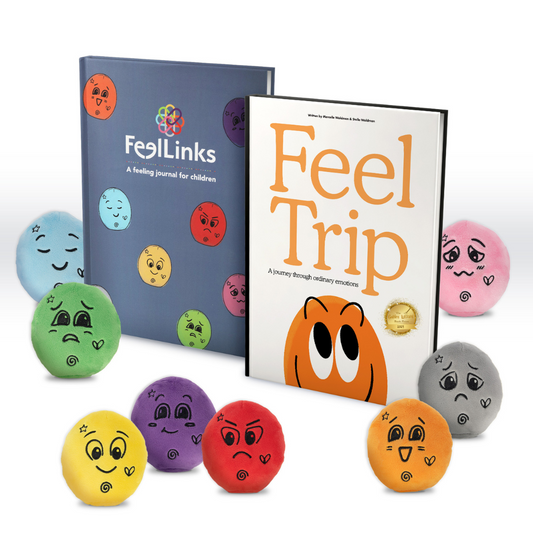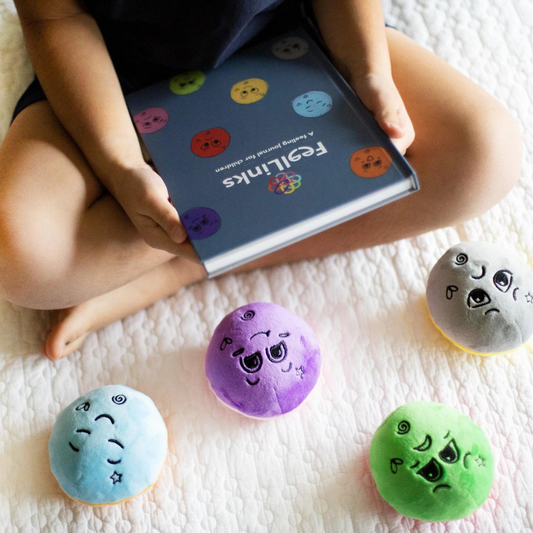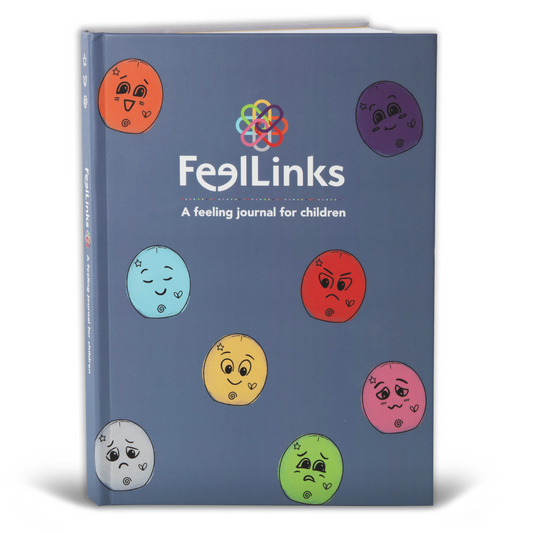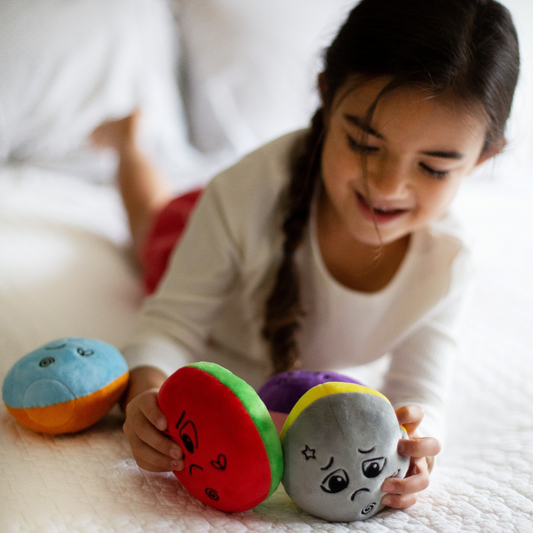Allowing Your Child To Feel Sadness
Share
**If your child, you, or someone you know, is experiencing feelings of sadness often, or you have any questions or concerns, be sure to speak with a healthcare professional.
Sadness is an emotion felt by all of us; it is a natural, healthy human emotion that comes and goes. In fact, it is considered a core emotion and it’s one of the very first emotions that humans feel. Feelings of sadness can last for moments or for longer periods of time. While it can be difficult for us, we need to allow our children to experience feelings of sadness. They are learning important life skills - they are capable of coping with big emotions and moving on!
Sadness can be a difficult emotion to manage. Sadness occurs in many forms; it can be anywhere from simple disappointment, to something as complex as grief. Sadness is felt and expressed in a variety of physical ways. Tears are the most obvious indications of sadness, but children may show sadness in other ways like anger, self-isolation, clinginess, or other physical signs such as stomach aches. A child may be unable to communicate or recognize these symptoms as stemming from feelings of sadness.
Important messages you can convey to your child when they are feeling sad are empathy, compassion and validation - a clear understanding that you are there for them. Sadness can be a lonely emotion, so it helps to have support from someone they trust.
As a parent, caregiver, or teacher of a child experiencing feelings of sadness, you can:
- Note changes in behavior that may demonstrate less obvious signs of feeling sad. If sadness is often and persistent, or you have any questions or concerns about sadness in your child, yourself, or someone else in your life, always speak with a healthcare professional.
- Labeling feelings of sadness, and any other feelings, for that matter, is important to our self-awareness and social-awareness. If your child is having difficulties labeling their sadness, help them by giving cues and coaching them. For example, if your child is being extra clingy with tears in their eyes when you drop them off at school, you can acknowledge and name their feelings by saying, “I know you feel sad when Mommy has to drop you off and leave, but you know I’ll always come back to pick you up.” Or there may be times when siblings or friends are feeling sad. You can point this out, by saying: “Your sister feels sad when you won’t share the blocks with her. Can you see she is crying?” This helps your child learn to understand and label their feelings in the future. It also supports growth in self-awareness and social-awareness. Noticing other’s feelings is important in building empathy.
- Validate, empathize and show compassion to your child when they are feeling sad (or any other feeling for that matter). Let them know that you hear them and understand they are feeling sad. “I can see how sad you feel right now, can you tell me more about why?” “That does sounds sad. How can I help you with that?” “I understand why you would feel sad that your favorite shirt is dirty and you cannot wear it today.”
- Regulating sad emotions can be difficult, especially if the child is crying uncontrollably – we have probably all experienced that type of cry! There are calming techniques our children can learn from our modeling and teaching that they can use to regulate. However, there will be times when our children are looking to us for co-regulation – “Co-regulation is defined as warm and responsive interactions that provide the support, coaching, and modeling children need to “understand, express, and modulate their thoughts, feelings, and behaviors” (Murray et al. 2015). While we might find it difficult witnessing our child feeling sad, we do not want to immediately swoop in to fix things in an attempt to quickly take away the feeling of sadness. We want our children to learn that sadness can come and go, and then we can move on. There are going to be plenty of times when we need to help our children regulate sad emotions, especially our younger kids. At any age, your child might want to be held or hugged (with permission). Your child may need your coaching to help them slow down and relax their heart rate by taking deep breaths together – a great way to take breaths is buddy breathing with a stuffed animal on their tummy as they watch it go up and down! Many of you with FeelLinks Dolls tell me your child loves doing this with their dolls! I have also attached some freebie breath work printables you can use with your child/student.
- Once your child is calm, it’s a good time to reflect on their sad feelings. You could start the communication by saying something like: “Feeling sad is very normal, we all feel sad sometimes.” This may open up more communication to further discuss their sadness. Or, it could help everyone move on!
Children can be sad for many reasons- some of which may seem significant, while others may seem minor to you. It’s important to remember that while your child’s sadness may appear to be over something small, it’s real and very significant for them.
There are other feelings that are similar to sadness that are important for our children to understand. We want our kids to be more specific with their feelings. In order to do this, when they are developmentally ready, we want to teach a broader emotional vocabulary. In the FeelLinks Journal there are sections called, “words to grow on.” For sad, the words that are similar, but slightly different are: disappointed, gloomy, grief, grumpy, heartbroken, hurt, lonely, mopey, unhappy, or upset. The more specific our children can be with their feelings, the better we are able to support their needs. Also, the better they understand a range of feelings, the better they are able to support other’s in their life.
Continue letting your child know their feelings are normal, and remember the same for yourself. Shine a positive light on all the feelings they express and learn to manage; it is the key to gaining lifelong skills in self-awareness, social skills, empathy, relationship skills, responsible decision making, and more!
FeelLinks feeling dolls and journal can support your child’s growth in emotional intelligence, helping them to understand, express, and manage their feelings. Order your FeelLinks set today and use this unique, hands-on tool for your home, school, therapy center, counseling office, or other healthcare providers office.
❤️🧡💛💚💙💗💜🤍
myfeellinks.com
With Gratitude,
Marcelle Waldman






